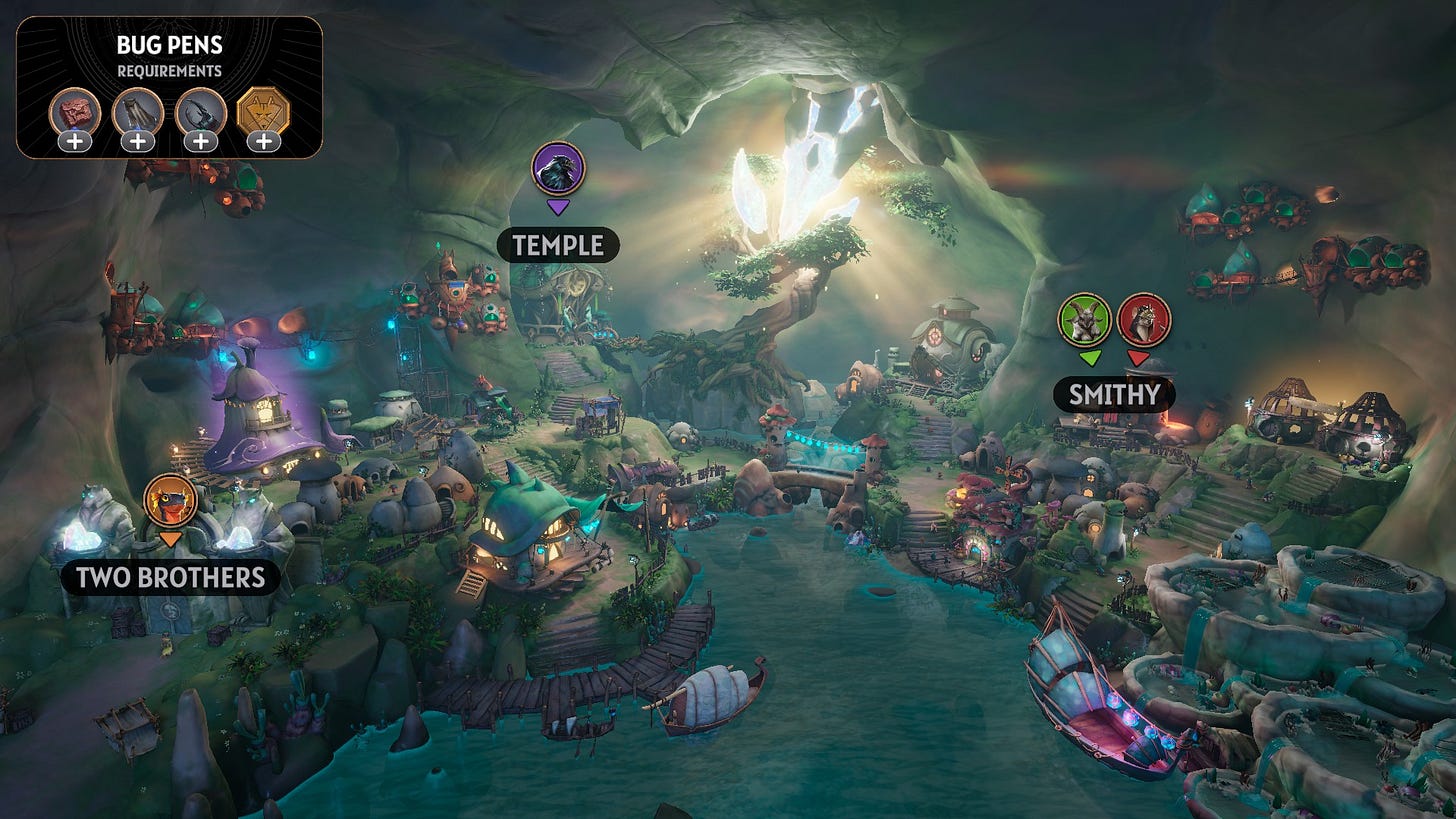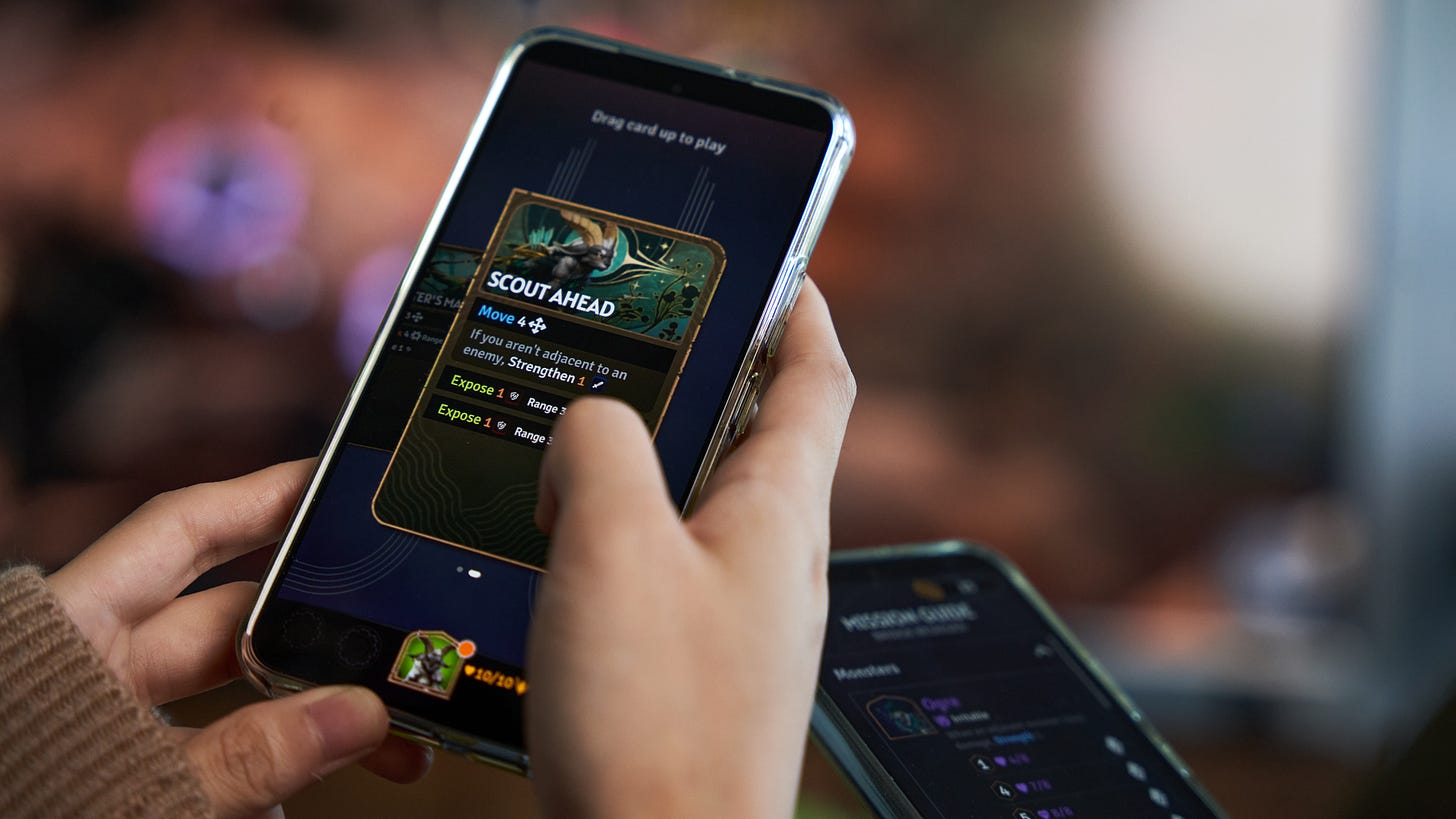Sunderfolk found an elegant solution for something TTRPGs have always struggled with
Reviews are coming out for Sunderfolk, a unique digitization of classic tabletop RPGs like Dungeons & Dragons. I spent the last few weeks playing it and I have some thoughts.
Hello! Apologies for sending this out a day later than usual, but there’s a good excuse.
I was very busy and very tired.
But also, today (as in literally this morning), I am finally able to talk about a game called Sunderfolk that I’ve been playing for the last few weeks. For a professional, organized, thoughtful review, you can read my full review on Gamepressure.
If you didn’t know, I am somewhat known as the “Game Master” among my friends. Working in games media helps with that, but it also extends to board games and tabletop RPGs like Dungeons & Dragons, which I rarely cover professionally.
But Sunderfolk, a debut game from developer Secret Door, somehow managed to combine my love of video games with my love of tabletop RPGs in a way I have never seen executed so well.
A good point of reference for understanding how Sunderfolk works is Jackbox. Jackbox games are played with a group of friends sitting around the TV, submitting responses to prompts through their phones. This varies from Quiplash, where players submit text responses to questions, or T-K.O., where players draw T-shirt designs and vote on the best one.
Sunderfolk takes this to the next level. Rather than using a browser, Sunderfolk has its own free app. Everyone’s character can be fully controlled from their phone screen, while the TV is occupied with displaying the wider battle map. This also means that not everyone needs to own the game, just one player can share the screen with the other three. It does a great job of digitizing the battle map and character sheets that could normally clutter a gaming table.
One thing that has always been a pain point with Dungeons & Dragons is the time between battles. Everyone needs time to decompress from tense situations, but at a table of four or more players, they will all have different ideas of what to do. A D&D game I ran had seven players. When we got to a new city, everyone had different ideas of what they wanted to do, which is fine, but it mean some players sat patiently while others interacted with NPCs, shopped, or explored.

Sunderfolk does a great job remedying this. When the heroes return to the village, everyone has their own screen (their phone) to occupy themselves. If one player wants to buy gear, another wants to visit the tavern, and another wants to talk to their favorite NPC, everyone can do that at the same time. There’s no need to wait while the other players have a conversation or haggle over the price of a new sword. Once everyone is ready to take on the next mission, meet up at the village gates.
I don’t think Sunderfolk is strictly better than tabletop or vice versa, but it does introduce some great quality of life changes and makes the entire experience much more accessible. If you want to learn more about the tactical combat, I wrote a whole section about that in my full review.
Sunderfolk could be the start of a huge game night revolution.
Sunderfolk will launch on April 23rd for Nintendo Switch, Xbox Series X/S, PlayStation 5, and PC. You can wishlist it on Steam.
Further Reading
Sunderfolk was not the only game I reviewed this week. Check out my review of Lunar: Remastered Collection, a remaster of two classic pixel-art RPGs from the 1990s.
All the details you need from yesterday’s Mario Kart World Direct. There were so many crazy characters.
ReMatch, the soccer game from the developers of Sifu, is having a closed beta this weekend. In the first day, over 100 thousand players took part. If you want a chance to participate, here’s how to sign up.
A few details caught my eye in the image shared for the next Star Wars game, Star Wars: Zero Company, an XCOM-like turn-based strategy game, that may have hinted at what time period the game takes place in.
Speaking of playtests, the Tears of Metal playtest is still happening on Steam. It’s like Braveheart meets Dynasty Warriors but turned into a challenging action rouge-lite.
Hell Express, a new indie game that combines the package delivery and atmoshpere of Death Stranding with the isometric shooter gameplay of Helldivers (1), was announced with a new trailer.
Last weekend, Bungie (the famed developers of Halo and Destiny) showed off the first look at gameplay of their new upcoming extraction shooter, Marathon.
FBC: Firebreak, the cooperative shooter from the makers of Alan Wake and Control, announced a livestream for next week. My big prediction: it will be announced for the Switch 2.
Indie In Review
Finally, I am getting around to my final thoughts on Viewfinder.
A lot has happened since I finished playing this game. The Nintendo Switch 2 Direct and immediate controversy, then I ended up working on several other games for review. But now, with much of the Nintendo drama in the past, and my Sunderfolk review complete, I can breathe a little easier.
So while I finished playing Viewfinder in just a week or two, it has taken several more for me to have the time to actually find the time to share more of my thoughts.
As a refresher, Viewfinder is the debut game from independent devleoper Sad Owl Studios. It is one of the most unique first-person puzzle games on the market, even a few years after its release. It introduced one of the most mind-bending video game mechanics I’ve ever come across.
Pick up pictures, take photos, place them in the world around you and it seamlessly adapts. It plays masterfully with perspective, creativity, and manages to keep new mechanics coming for its short five hour runtime.
One of my only true gripes with the game is its narrative. I think it takes the lid off the wider story a little too soon, and pretty early on I stopped answering the phone becasue I would rather explore the world and its puzzles than listen to the other character talk.
There are some parallel stories though, and the one you can find via scattered audio recordings in the world are much more interesting. It gives some perspective on the people who built this world and why.
The puzzles take center stage, and the game is well paced. Just as you begin to master a new complication, it introduces something new. Even as the puzzles got more complex, I still felt like there were multiple ways to solve each one, depending on how you play.
Overall, I had a great time with Viewfinder. It might not be the indie game of the year for me, but I’d easily recommend it to anyone who wants a few good nights of one of the most creative puzzle games since Portal. Ultimately, I look forward to hearing more from Sad Owl Studios. They found a lot of nororitey with Viewfinder, even earning themselves a Game Awards nomination. Whatever they come up with next I will be first in line to take a look.
Viewfinder is available on PlayStation 5, PlayStation 4, and PC via Steam.
What’s Next?
I’ve got another game lined up for Indie in Review next week, but of course, we’ll if anything gets in the way of that.
I have been toying around with the idea of a separate newsletter specifically for reviews, but I’m not sure that’s something people want. It could also give me a good excuse to never get around to it. So let me know if that’s something that sounds interesting and I’ll keep pondering.
Thank you for reading!



